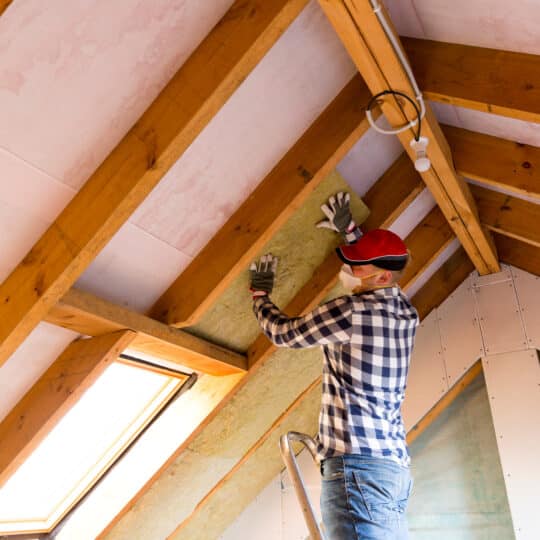Why Insulation with Minerals Matters
The Key to Safe, Sustainable Construction

When it’s cold and blustery outside, the warmth within the four walls of your home is a welcomed retreat. You can thank insulation for that. Not only does insulation help keep a home comfortable, but it can also help keep it safer, quieter, and more durable, especially when the insulation is made from minerals. Learn more about mineral insulation and its many benefits for your property and the environment.
How to Make Insulation from Minerals
When making insulation, the material should help resist the flow of heat, sound, or electricity from one environment to another. Ideally, insulation should be lightweight yet durable for long-lasting effects. Insulation comes in many forms. Some common insulators include wood, plastic, glass, porcelain, foam, and minerals. However, some of these materials are easily damaged, prone to rot, and could contain harmful components. But not minerals.
Benefits of Mineral Insulation
Since insulation is designed to help make a home more safe, comfortable, and energy-efficient, the insulating material should also be safe, easy to use, and efficient. Insulating minerals are non-flammable, recyclable, lightweight, and pourable. Here’s a more in-depth look at some of the many benefits.
- Thermal Performance. Minerals boast excellent thermal conductivity, effectively reducing heat transfer through walls, floors, and roofs. This ability to regulate temperatures helps minimize heating and cooling costs, making buildings more energy-efficient and comfortable throughout the year.
- Fire Resistance. Composed of non-combustible materials, mineral insulation acts as a barrier to help slow the spread of flames.
- Acoustic Insulation. The fibrous structure of minerals absorb sound waves, reducing noise transmission from external sources.
- Moisture Resistance. Mineral insulation repels water and prevents moisture buildup within wall cavities or attic spaces. This helps maintain indoor air quality, prolongs the lifespan of building materials, and reduces the likelihood of costly repairs related to water damage.
- Environmentally Friendly. With its natural composition, insulating minerals require minimal processing and energy during production, resulting in a smaller carbon footprint compared to synthetic alternatives. Additionally, mineral insulation is recyclable, further reducing waste and conserving resources.
- Durability and Longevity. Resistant to compression, settling, and degradation, minerals maintain their structural integrity resulting in consistent performance throughout their lifespan. This makes it a more high-quality, cost-effective option and reduces maintenance costs and the need for replacements.
Thermal Properties of Perlite
Perlite is one sustainable mineral versatile enough for various applications, including insulation. Formed when obsidian—a type of volcanic rock—is exposed to high heat, perlite is a lightweight, porous material with exceptional insulating properties.
Perlite can be mined, crushed, and heated to be used as an inorganic insulating material. Crushed perlite comes in granular form from a coarse texture to a fine powder. When the water trapped inside perlite granules is heated, it expands up to 20 times its original volume and takes on a cellular, foam-like structure. This makes perlite extremely efficient for filling irregular spaces as a low density insulator.
Perlite Mineral Insulation Applications
Once expanded, perlite’s glassy, closed cellular structure is lightweight with low combustibility and low thermal conductivity. This makes it an ideal material for thermal insulation.
- Rooftops. Perlite concrete helps reduce overheating, and when combined with gypsum it can be used as boards under building roofs.
- Floors. Low density material is ideal for filling sunken areas. Since perlite is moisture-resistant, it’s typically found in areas exposed to dampness.
- Sound-proofed rooms. The large irregular surface area makes perlite-based acoustical plasters and tiles more absorbent, thus preventing sound reverberating from the ceiling and walls.
- Masonry fill. Use the industrial mineral in the hollow cores of concrete blocks or cavities.
- Cryogenic chambers. Cold cryogenic fluids such as hydrogen and helium are normally stored in double-walled vessels with perlite-filled annular spaces.
- High-temperature areas. Insulate chimneys, pizza ovens, and specialty stoves with non-combustible perlite.
From its superior thermal performance to its durability, mineral-based insulation offers an eco-friendly solution for enhancing the comfort, safety, and efficiency of structures. Whether in residential, commercial, or industrial applications, harnessing the power of mineral insulation is a smart choice for building a greener, more resilient future.
Join Our Mailing List
Our blog offers insight and information about new and exciting uses for perlite, diatomaceous earth, and vermiculite deriving from years of research and application. From passive fire resistance to mineral depth filtration, by subscribing to our mailing list, you will receive the latest information surrounding the Dicalite, Dicaperl, and Specialty Vermiculite brands and products.